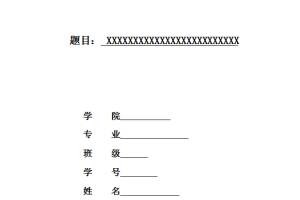摘要
新中式风格诞生于中国传统文化复兴的新时期,伴随着国力增强,民族意识逐渐复苏,人们开始从纷乱的“摹仿”和“拷贝”中整理出头绪。在探寻中国设计界的本土意识之后,逐渐成熟的新一代设计队伍和消费市场孕育出含蓄秀美的新中式风格。新中国风格并非完全意义上的复古明清,或者照搬古典,而是将古典语言以现代手法诠释,注入中国文化的意境,使空间通过中式风格的特征,表达对隽永含蓄、端庄存货、余韵悠远的东方式精神境界的追求。它既弥补了传统古老的中式风格对现代人生活方式的不适应和现代风格的冰冷不足,同时又能满足现代人生活方式的不适应和现代风格的冰冷不足,同时又能满足现代人对传统精神文化的追求。
关键词:现代家具;中式风格;继承与创新
Abstract
This paper describes the course of development of traditional Chinese furniture, the analysis of the current development of modern furniture design and design features, the instance of authentication, data analysis, described the role of the Chinese style in modern interior design, modern interior design in the form of,the five aspects of function, materials, structure, process, fully demonstrated the Chinese style in modern furniture design and innovation. Access to the relevant theory on modern furniture design innovation and change on the basis of traditional Chinese furniture. Combined functional form of the multiple aspects of the transplantation of the essence of traditional Chinese style and traditional materials, new applications and new materials applications to illustrate the modern Chinese furniture inherited the traditional Chinese style furniture, and how on this basis innovation. In order to enhance the design into a knowledge, familiar with modern furniture and design trends to grasp the factors of instability in the development process, modern furniture design and interior design harmony with do further exploration seek to understand.
Keywords: Modern furniture; Chinese style; inheritance and innovation
目录
摘要………………………………………………………………………………………… 1
Abstract ………………………………………………………………………………………1
前言 …………………………………………………………………………………………1
- 新中式风格研究的目的及意义
1.1新中式风格研究的目的………………………………………………………1
1.2新中式风格研究的意义………………………………………………………1
二、新中式风格在室内设计中的类型及其分析
2.1新中式风格与现实社会的融合…………………………………………………2
2.2新中式风格中元素的延伸………………………………………………………3
三、新中式风格设计的要点
3.1新中式风格的表现特点及手法………………………………………………3
3.2如何运用现代手法表现传统文化………………………………………………4
3.3中式风格设计所面临的弊端……………………………………………………5
结语……………………………………………………………………………………………6
注释……………………………………………………………………………………………7
参考文献 ………………………………………………………………………………… 8
致谢……………………………………………………………………………………………9





